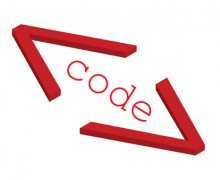Five Steps to Creating Compelling, Optimized Webpage Titles!
 Greetings web writers and online marketers! With Halloween just around the corner, it’s appropriate that today we’re venturing into that (seemingly) scary and mysterious realm of creating code for optimizing our Title, meta description, and meta keywords tag! Fear not: we’re just walking through the basics, and you’ll see that it’s actually pretty easy. Really!
Greetings web writers and online marketers! With Halloween just around the corner, it’s appropriate that today we’re venturing into that (seemingly) scary and mysterious realm of creating code for optimizing our Title, meta description, and meta keywords tag! Fear not: we’re just walking through the basics, and you’ll see that it’s actually pretty easy. Really!
In last week’s discussion of simple keyphrase editing, we noted that combining optimized keyphrase edits with a strong, persuasive title and meta description makes for powerful results! So let’s start with how to create a compelling, well-optimized webpage Title.
First, what and where is this mysterious code? Code is simply computer language that communicates to the browser what the webpage should look like, from font size to layout. It is programming that underlies each and every page on the web, and you can view it by right clicking your mouse and then selecting “view page source.” (Mac users, simply click “View” then “view source.”) You’ll see daunting stuff such as this:
<head>
<title>SEO copywriting training, content marketing and copywriting: Increase sales with powerful content!</title>
<meta name=”description” content=“Drive more web traffic. Boost your search engine rankings. Make more money. Online SEO copywriting training classes for freelance writers, small businesses and marketers.” />
<meta http-equiv=”Content-Type” content=”text/html; charset=UTF-8″ />
<meta http-equiv=”Content-Language” content=”en” />
Notice the emphasized (added) text? It is the code located at the very top of the page, under <head>. Unless you’re a web designer, that is all you really need to concern yourself with: the Title and the meta description.
The Title is that text that appears above your web browser when you click on any given web page. The home page of this site will display the Title:
SEO copywriting training, content marketing, and copywriting: Increase sales with powerful content!
It’s also the clickable link on the search engine results page:
SEO copywriting training, content marketing and copywriting …
And unless you type in different text, the Title will describe the page in your bookmarks.
As a critical coding element, the Title is an incredibly powerful tool for search engine optimization. So it’s absolutely essential that you craft a compelling, unique, and keyphrase-rich Title for every page on your site. Yes, it’s that important!
Search engines determine what your web page is about from the Title, much like how you figure out what a book is about from its Title. So potent is the Title for search engines that creating (or editing) a Title rich with keyphrases can often give rankings an immediate boost! Regardless of whether (or not) you have excellent, keyphrase-rich content on your web pages, it is the (coded) Title that the search engines will “read” and register on the results page.
Also, the Title functions just like a headline on the search engine results page: think of it as your first conversions opportunity, enticing searchers to click on your Title link — visiting your site as opposed those of your competitors’ sharing the same search results page. You don’t necessarily have to be ranked number one on the page to be competitive with this conversions opportunity! As with the headline on your web page, your Title should include a benefit statement that encourages the reader to take action (in this case, click on your website’s link).
Here are five steps to creating clickable Titles:
- Keep in mind that you’ve about 70 characters — including spaces — to work with, although it’s no big deal if you go slightly longer. Google will just cut it off at 70 characters and end it with”…”
- Include your most important keyphrases for that page in the Title. You may or may not be able to gracefully fit in all (three) of your keyphrases, and that’s all right. Just be sure your most important keyphrase is represented. (Keyphrases that don’t appear on that specific web page should not be included; they’ll only detract from those keyphrases you’re targeting for that page).
- While you can switch the order of your original keyphrase wording, it’s best to try for an exact match. For instance, “Copywriting, content marketing, and SEO copywriting training,” would probably work, but it’s best to stick with the original order (“SEO copywriting training, content marketing, and copywriting”).
- Whenever possible, include a benefit statement. In this example, it’s “Increase sales with powerful content!” Short words conveying benefits such as “free,” or “discount” work well, if applicable, as they’re easier to accommodate within the 70-character space allotted.
- Don’t be afraid to be creative and explore what works: Titles can always be changed! Some Titles ask a question, while others engage in word play. Ask yourself what can set your Title apart and capture the browser’s attention! Hint: think about your unique selling proposition (U.S.P.)!
Thanks for checking in, and please come back for next week’s code-breaking discussion of meta descriptions and meta keywords tags, and how to best optimize for these other basic SEO elements!


Trackbacks & Pingbacks
[…] will make the content easily searchable and targeted for your keyword phrase. This includes the title tag and meta description, header tags (H2′s and H3′s especially), and optimization of your images including the […]
[…] descriptions into powerful marketing statements. As you (hopefully) concluded from last week’s de-mystifying explanation of code, technical terms needn’t paralyze or intimidate you…they just sound […]
Leave a Reply
Want to join the discussion?Feel free to contribute!